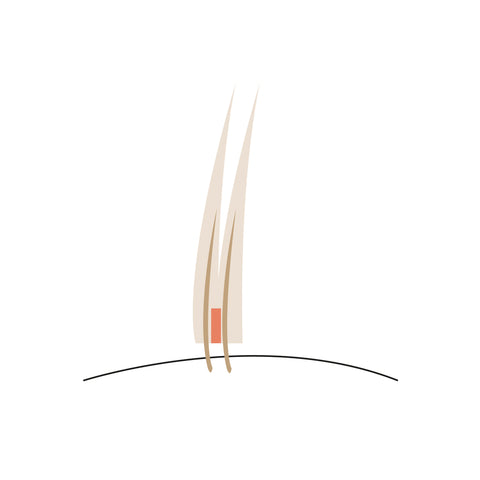FREE STANDARD SHIPPING FOR ORDERS OVER 99€!
FREE STANDARD SHIPPING FOR ORDERS OVER 99€!
FREE STANDARD SHIPPING FOR ORDERS OVER 99€!
FREE STANDARD SHIPPING FOR ORDERS OVER 99€!
June 23, 2021 4 min read

For those of you who do not know, a “stickie” is lash industry term to describe one lash getting stuck to a neighbouring lash. This is usually due to poor isolation or applying too much Eyelash Glue to the Lash Extension. It’s perfectly normal to have a few stickies come up during your work - it happens to the best of us - just be sure that you spend a good 10 minutes at the end of the treatment to find them and separate them.

The first type of stickie is when a tiny baby eyelash gets stuck to an extension. These are one of the most common, and one of the most damaging types of stickies.

The second type of stickie is when two extensions are stuck together. This type of stickie is the easiest to spot and arguably the easiest to separate. You would just grip the lash with your Isolation Tweezers, and pull the other one off of it with another pair of tweezers. It may seem time consuming but it is easy and very important that you do it.

Finally, the third type of stickie is when two natural lashes are stuck together. This can happen when you have placed an extension on a natural lash but have taken it off again, either due to bad positioning or too much lash glue. The natural lash, still covered in glue, can easily adhere to the neighbouring lash when you come to re-isolate the surrounding lashes. These are the ones you have to watch out for because they are very easy to miss.
Other than for aesthetics, the reason it is important to check your work for stickies is that they are extremely damaging to the natural lashes. But what makes them so damaging?

Well, we know lashes have different stages of growth. Baby lashes grow much quicker than a full-grown lash that is in its “resting stage”. If a baby lash becomes stuck to a fully grown lash, it will keep growing and could simply pull the resting lash out, permanently damaging the hair follicle. If you are lucky and it doesn’t rip the lash out, it will create a loop (as shown in the image above) and push the extension in the wrong directions, creating a very unflattering look.
Remember we want a full and fluffy set of lashes, not spider legs. Not only are stickies damaging to the natural lashes, they also damage the reputation of the lash industry. How many times have you heard “Lash extensions completely ruined my natural lashes...”? Well, if it wasn’t for the dreaded stickies and poor application, eyelash extensions should never cause any damage to natural lashes.
The first step to prevent stickies is to correctly isolate the lash. However, regardless of how careful you have been, stickies can occur from time to time even after good isolation, which is why it is essential to always check your work when you have finished.
Always use the correct amount of glue, just a tiny ball but not a blob as shown below. A glue that dries too slow can contribute to stickies.

There are different techniques you can use to avoid stickies, the first of which is called “lash by lash”. This is where you simply apply extensions through the lashes from one end to the next with all the lashes covered. The advantage of this method is that you tend to avoid shock polymerisation in the outer corners and you save a bit of time because you're not trying to select the perfect natural lash, but the downside is that you run the risk of extra stickies because you're squishing the recently applied lashes together. One way to avoid that is to lash both eyes at the same time, so apply one lash on the left eye, one of the right, etc. - But as a warning, this technique is better used by more advanced Lash Technicians who are using rapidly drying glue.
The next technique is probably the safest - it’s what lash artists call “carcass”. This is where you apply one lash, then leave a gap of around ten natural lashes before applying for the next extension, giving the first extension time to dry. It is also beneficial to work evenly across both eyes - giving glue even more time to dry before lashes are moved once again.
Checking your work for stickies is as important as applying Eyepatches - it’s all about safety! Always ensure you save 10 minutes at the end of a treatment in order to do this thoroughly and correctly. The first way you can check for stickies is to check each individual lash from root to tip with your tweezers, not forgetting to check every natural lash to ensure that two baby lashes are not stuck together. You will need to check layers, because lashes don’t grow in just one row - you are almost guaranteed to find at least one stickie between the layers!
Now you know the risk of stickies. Not only will your client be happy with the results once you get rid of them, but your work will look brilliant too.
Sign up to get the latest on sales, new releases and more …
